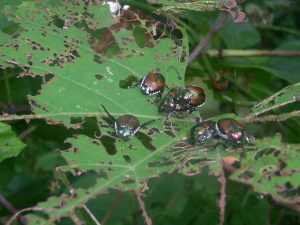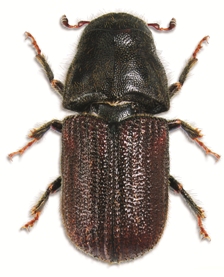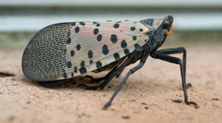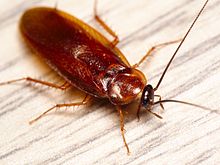 Nights are sleepless when you have to share your bed with the creatures who are responsible for the red bumps and itchy patches on your body. Waking up in the morning with red bumps and itchy patches is the most irritating.
Nights are sleepless when you have to share your bed with the creatures who are responsible for the red bumps and itchy patches on your body. Waking up in the morning with red bumps and itchy patches is the most irritating.
I am speaking of the pesky pests called bed bugs!
What if the same creatures are found in the schools?
Without any doubt, they are found in schools as well.
You don’t believe?
Just peep down.
Baldwinsville schools to use bedbug-sniffing dogs after finding insect
Updated on October 11, 2017
By James T. Mulder
SYRACUSE, N.Y. — After finding a bed bug in one of its schools, the Baldwinsville Central School District plans to use specially trained bedbug-sniffing dogs to search all of its buildings to see if there are more of the insects.
The district notified parents today that it found a one-bed bug at Ray Middle School.
Bed bugs found at Shreveport elementary school
By: Marquel Sennet
Posted: Apr 07, 2017
Shreveport, LA – Bed bugs lurk in cracks and crevices. They’re about the size of an apple seed and are flat and round. On April 4th the nurse at J.S. Clark Elementary School found active bed bugs on a student.
The Director of Elementary Schools, Brenda McDonald says in her 30 years with Caddo Parish Public Schools this is the first incident of bed bugs that she’s been made aware of at a school.
Wondering if schools are safe for our children.
The sensitive, naive lads go schools and come back with bug bites.
Even schools are not barred by the pests, no matter by what source they enter the schools.
Bed bugs usually enter schools on the clothes or belongings of students, staff, volunteers or visitors. While the bugs may come from these individuals’ homes, it is also possible they picked them up from classmates, transportation vehicles or some other source on their way to school. They get into the schools through the items students carry transport back and forth from home to schools.
Their tiny bodies enable them to fit into tiniest crevices. The wooden benches and seats are nesting sites for these insects. Bedbugs are often found in the wooden furniture and different frames used in schools. They hide in the couches, mattresses, walls, and ceiling. The bedbugs can be found on the seats from the buses used for transportation of students.
 They take around 10 mins to complete a blood meal and can consume 2-5 times of their own body weight. They feed on any bare skin exposed, like face, neck, arms, hands, etc. Skin reactions are commonly associated with bed bug bites which result from the saliva injected during feeding. The common allergic reactions include the development of large welts that are accompanied by itching and inflammation.
They take around 10 mins to complete a blood meal and can consume 2-5 times of their own body weight. They feed on any bare skin exposed, like face, neck, arms, hands, etc. Skin reactions are commonly associated with bed bug bites which result from the saliva injected during feeding. The common allergic reactions include the development of large welts that are accompanied by itching and inflammation.
There are chances that multiple students/people from the school are responsible for getting the bedbugs in the schools. Checking everyone entering the school won’t be the solution.
Schools need an effective solution to prevent the bed bugs from biting the students and other people from the school. Such a solution is available with C Tech Corporation.
Combirepel™ is an extremely low toxic, non-hazardous, non-mutagenic and non-carcinogenic anti-insect aversive.
Combirepel™is developed on green technology and chemistry. It is effective against a broad spectrum of insects such as bed bugs, wasps, whiteflies, termites, beetles etc.
Combirepel™ is thermally stable and does not degrade on exposure to heat and sunlight. It does not kill or harm the insect but repels them. It does not volatilize and does not degrade the soil. It is RoHS, RoHS2, REACH, ISO, APVMA, NEA compliant and FIFRA exempted.
Our product works on the mechanism of repellency. It temporarily inhibits the mating cycle of the insects. The product impairs the ability of the insects to reproduce, that is the insects will not lay eggs or the laid eggs will be infertile. The product causes feeding disruption in an insect by triggering an unpleasant reaction within the insect which might try to feed on the application. The product temporarily blocks the reproduction system of the insects by hindering the release of the vital hormones for growth.
Our product in the form of liquid concentrate can be mixed with paints in a pre-determined and can be applied to the interior and exterior of the schools. The kitchen, pantry, canteens and other food eating places can be painted using our product. The product is safe to be used in the classrooms and around children. The liquid concentrate can be used with the paints used to coat the school buses. The bud bug repellent can be sprayed on the couches, seats, mattresses, dusters, etc. used in the schools.
Since the bed bugs hide in the crevices and corners of the wooden articles, these can be coated using our lacquer. The lacquer is a topical application and is compatible with most of the surfaces like wood, metal, ceramic, polymer, concrete etc.
Our product available in the form of masterbatch can be incorporated into the polymeric application used in schools and can be used while manufacturing polymeric benches, seats, chairs, playing instruments, wires, and cables, pipes etc.
Contact us at technical.martketing@ctechcorporation.com to get best solutions for pest nuisance
Also, visit our websites:
http://www.ctechcorporation.com/
http://www.rodrepel.com/
http://www.termirepel.com/
http://www.combirepel.com/
Follow our Facebook pages at:
1] https://www.facebook.com/Combirepel-411710912249274/
2] https://www.facebook.com/Termirepel-104225413091251/
3] https://www.facebook.com/Rodrepel-120734974768048/
Follow us on our Twitter pages at:
1] https://twitter.com/rodrepel
2] https://twitter.com/termirepel
3] https://twitter.com/combirepel





















